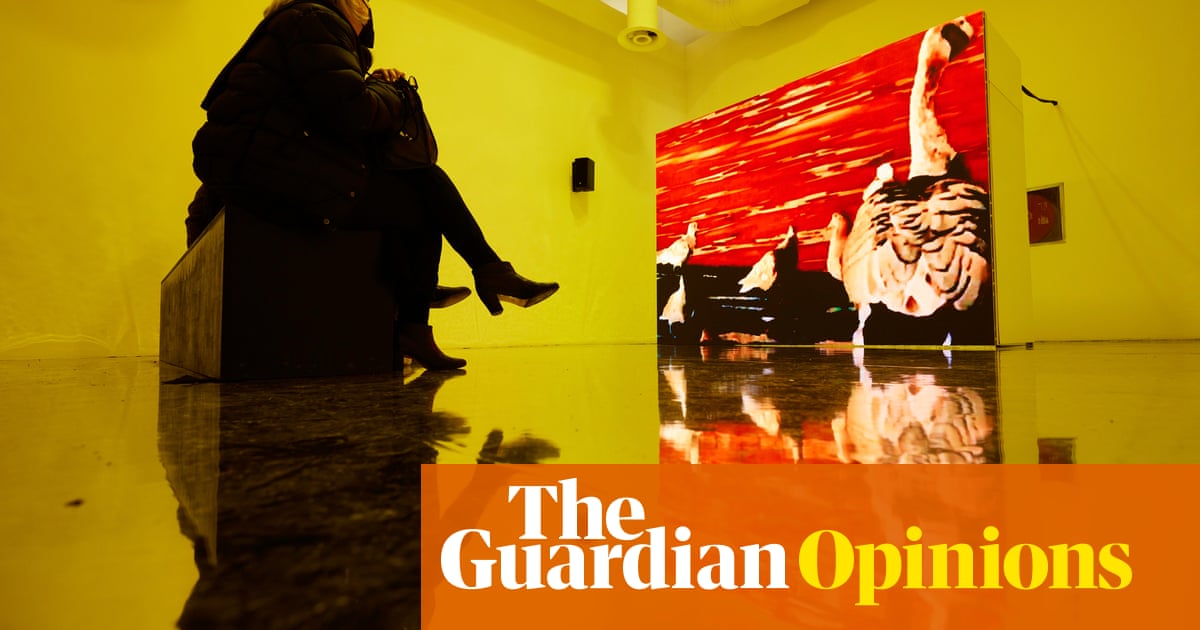Show caption On Venus by P. Staff at the Venice Biennale. Photograph: David Levene/The Guardian Opinion The Guardian view on the Venice Biennale: sensuous and serious Editorial The latest edition of the art exhibition feeds all the senses. It feels exactly right for now Thu 28 Apr 2022 18.26 BST Share on Facebook
Share on Twitter
Share via Email
The 2022 Venice Art Biennale belies its name. Delayed by the pandemic, it is three rather than two years since the previous edition, which bore the foreboding title May You Live In Interesting Times. The ancient Chinese curse certainly worked.
Cecilia Alemani, the New York-based Italian curator of the 59th edition, which opened on Saturday, thus had extra time to prepare her exhibition, which occupies the large central pavilion in the city’s Giardini, as well as the immense spaces of an old rope-making factory in the nearby Arsenale. It shows. Her deep research has produced an unusually coherent show, which, aside from the acreage of new art, also deepens its frame of reference by showing historic work, often by surrealists such as Ithell Colquhoun, Dorothea Tanning and Remedios Varo. Such artists prefigure Ms Alemani’s contemporary preoccupations: the body in transformation, metamorphosis, the world considered from a perspective other than that of the white male.
The result is an exhibition 90% created by women, along with some non-binary and transgender artists. This is a corrective to the domination of male artists in the Venice Biennale ever since its foundation in 1895, and it is echoed in the choices by individual countries of artists for national pavilions, with the US, France, the UK, Germany, Poland, Romania, Scotland and many other much-discussed shows all in the hands of women.
If there were an overall mood or spirit here, it would be one of cooperation and friendship: rare are the artists who have valorised working in romantic, stoical isolation. Alberta Whittle, representing Scotland, talks of her “accomplices”, from dancers to historians, who have collaborated with her to make her film; Roma artist Małgorzata Mirga-Tas, who occupies the Polish pavilion, has stitched extraordinary patchwork “frescoes” with the help of female fellow sewers; Golden Lion winner Sonia Boyce has pushed herself to the background in order to showcase the talents of black female vocalists and composers in her pavilion for Britain.
Another consequence of the pandemic on Ms Alemani’s exhibition, perhaps an unconscious one, is its sensuousness. That is despite the fact that it was mainly researched behind a screen, with the accustomed studio visits occurring virtually. The exhibition is full of sculptures that beg to be viewed from every angle and admired in all their physicality, their texturedness, their suggestion of touch. Even the film and video works tend to have a material feel, sometimes because of the setting in which they are shown, such as P. Staff’s overwhelming kaleidoscope of colours set in a mirrored room, in which the frequent violence of the content is belied by the beauty of the distorted images. An earth maze by Colombian artist Delcy Morelos might at first call to mind the post-minimalist Earth Room by American sculptor Walter de Maria – except that she has added tobacco, cocoa, cloves and other spices to the soil, such that the experience is seductively olfactory.
This is art that is to be experienced “with the fullness of the body”, Ms Alemani told the Guardian last week. After two years of physical deracination, from each other as well as from art, it is exactly what feels needed now.
